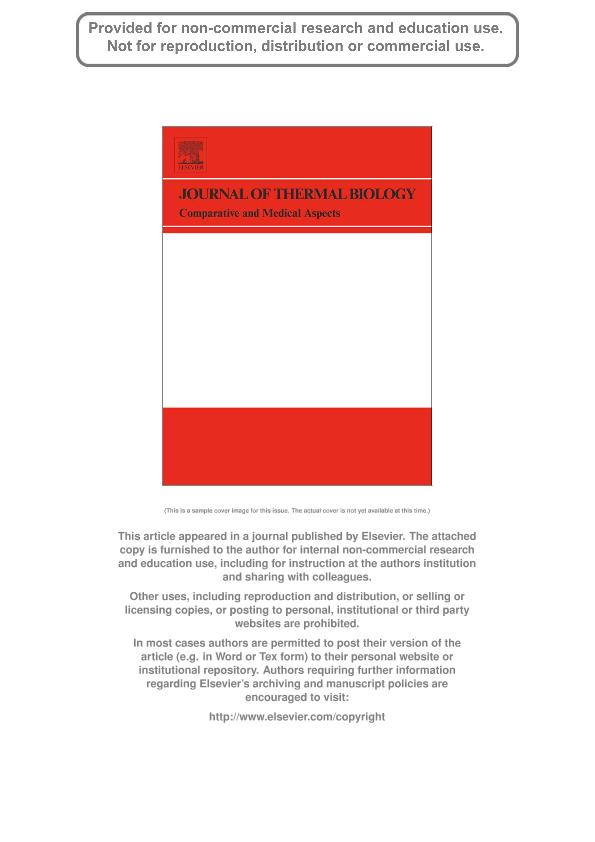Artículo
Thermal biology of genus Liolaemus: A phylogenetic approach reveals advantages of the genus to survive climate change
Medina, Susana Marlin ; Scolaro, Jose Alejandro
; Scolaro, Jose Alejandro ; Méndez de la Cruz, Fausto Roberto; Sinervo, Barry Raymond; Miles, Donald Bailey; Ibarguengoytía, Nora
; Méndez de la Cruz, Fausto Roberto; Sinervo, Barry Raymond; Miles, Donald Bailey; Ibarguengoytía, Nora
 ; Scolaro, Jose Alejandro
; Scolaro, Jose Alejandro ; Méndez de la Cruz, Fausto Roberto; Sinervo, Barry Raymond; Miles, Donald Bailey; Ibarguengoytía, Nora
; Méndez de la Cruz, Fausto Roberto; Sinervo, Barry Raymond; Miles, Donald Bailey; Ibarguengoytía, Nora
Fecha de publicación:
12/2012
Editorial:
Pergamon-Elsevier Science Ltd
Revista:
Journal of Thermal Biology
ISSN:
0306-4565
Idioma:
Inglés
Tipo de recurso:
Artículo publicado
Clasificación temática:
Resumen
The trends of body temperatures in the field (Tb) and preferred body temperatures in the laboratory (Tpref) of the genus Liolaemus relative to reproductive mode, air temperature (Tair), precipitation, latitude, and elevation were studied using phylogenetic comparative analysis. Results were discussed in the framework of the evolution of thermal physiology and vulnerability to global climate change. Reproductive mode affects Tb but not Tpref. Whereas Tb and Tpref showed a significant association with Tair, there was no relationship with latitude or elevation. In most liolaemids, Tpref is significantly higher than Tair and Tb pointing to a primitive condition of Tpref, probably related to earlier Miocene environments. Phylogenetic trends in the evolution of liolaemid thermal physiology provide a physiological explanation for the lowest rates of observed contemporary climate-forced extinctions and those forecasted under climate warming scenarios up to 2080. Liolaemids have a much higher Tpref than is expected for their environments, especially for viviparous members of the genus, in contrast to other viviparous taxa in the sister family the Phrynosomatidae, which have evolved much lower Tb (and Tpref) and currently experience a much higher rate of climate-forced extinction.
Palabras clave:
Liolaemus
,
Phylogeny
,
Squamata
,
Temperature
,
Viviparity
Archivos asociados
Licencia
Identificadores
Colecciones
Articulos(INIBIOMA)
Articulos de INST. DE INVEST.EN BIODIVERSIDAD Y MEDIOAMBIENTE
Articulos de INST. DE INVEST.EN BIODIVERSIDAD Y MEDIOAMBIENTE
Articulos(SEDE CENTRAL)
Articulos de SEDE CENTRAL
Articulos de SEDE CENTRAL
Citación
Medina, Susana Marlin; Scolaro, Jose Alejandro; Méndez de la Cruz, Fausto Roberto; Sinervo, Barry Raymond; Miles, Donald Bailey; et al.; Thermal biology of genus Liolaemus: A phylogenetic approach reveals advantages of the genus to survive climate change; Pergamon-Elsevier Science Ltd; Journal of Thermal Biology; 37; 8; 12-2012; 579-586
Compartir
Altmétricas



